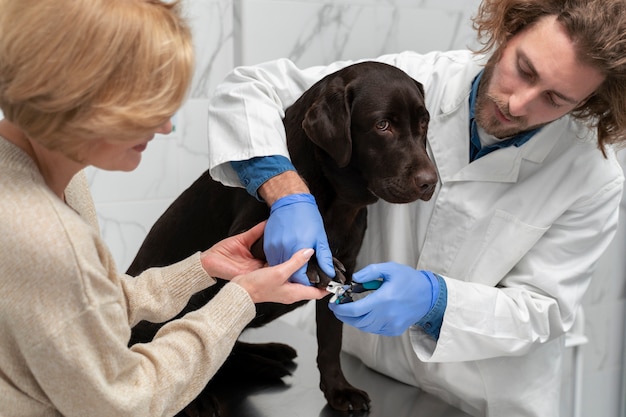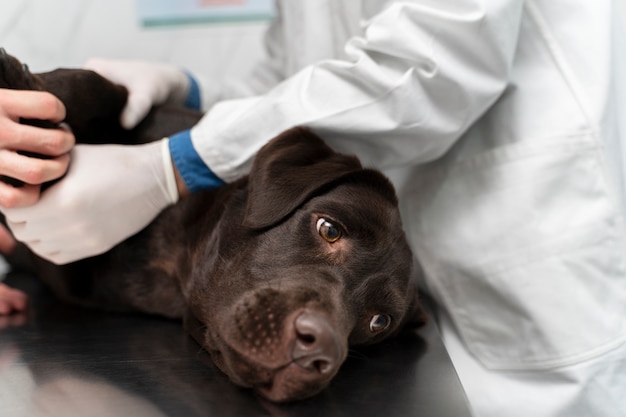What Happens During Laceration Repair for Pets


What Happens During Laceration Repair for Pets
When your pet gets a sudden cut or wound, panic and worry often set in quickly. Whether it happened during a playful romp in the yard, a scuffle with another animal, or an unexpected accident at home, seeing blood or an open wound on your beloved companion is always distressing. As a pet owner in Corpus Christi and surrounding communities, knowing exactly what to expect from pet laceration repair can make a world of difference in how you handle the situation. At South Texas Veterinary Urgent Care, located at 4133 Gollihar Road, Corpus Christi, TX 78411, our veterinary professionals specialize in providing fast, effective emergency wound care for pets. Walk-ins are always welcome, and no appointment is needed—especially when time is critical, or your regular veterinarian is unavailable.
In this article, we will walk you through the entire process of pet laceration repair, from recognizing a serious wound to what happens during treatment and how to help your pet recover at home. You will also discover how seeking prompt, professional attention can minimize complications and promote faster healing. If you are searching for an "emergency vet near me" or need urgent care vet services, our clinic is ready to help. For more information about our laceration repair capabilities, you can also visit our detailed laceration repair services page.
Recognizing When Your Pet Needs Laceration Repair
Pet injuries can range from superficial scrapes to deep, potentially life-threatening cuts. It is important to recognize the signs that indicate your pet needs immediate veterinary attention. Common symptoms of serious wounds include visible bleeding that does not stop after several minutes, deep or gaping cuts where layers of tissue are exposed, swelling or redness around the wound, and signs of pain such as limping, whining, or reluctance to move. Additional warning signs can involve excessive licking or chewing at the site, discharge or pus, and, in severe cases, signs of shock like pale gums or rapid breathing.
If your pet is injured and you are unsure about the severity, err on the side of caution and seek emergency wound care for pets in Corpus Christi. Prompt action is crucial, especially if the injury occurred late at night, on weekends, or when your regular veterinarian is closed. Our team at South Texas Veterinary Urgent Care is here to provide rapid assessment and treatment, so you never have to wait for help when every moment counts.
Why Do Lacerations Happen? Understanding the Causes
Lacerations are among the most common reasons pets require urgent care veterinary services. These wounds often happen unexpectedly and can be caused by a variety of situations. Leading causes include accidents such as stepping on sharp objects, fence or gate injuries, encounters with broken glass, or altercations with other animals. Pets may also develop lacerations from running through brush or thorns, becoming caught on household items, or being involved in motor vehicle accidents.
Environmental hazards in Corpus Christi and surrounding communities, such as prickly vegetation, snake encounters, or the presence of wildlife, can also contribute to the risk. Understanding these risks allows you to take preventive measures, but even the most careful pet owners cannot prevent every accident. When injuries occur, knowing where to find pet laceration repair in Corpus Christi can save precious time and spare your pet unnecessary pain. If you ever need guidance on urgent situations, our urgent veterinary care services page is a helpful resource.
What to Expect: The Laceration Repair Process for Pets
When you bring your pet to South Texas Veterinary Urgent Care for laceration repair, the process is designed to provide immediate comfort and optimal healing. Our emergency wound care for pets near me starts with a thorough examination by our veterinary professionals. We assess the wound’s depth, location, and extent, checking for any foreign material or signs of infection. Depending on the severity, sedation or anesthesia may be required to ensure your pet is comfortable and remains still during the procedure.
The initial steps involve gentle cleaning and flushing of the wound to remove dirt and debris. Our team will trim the fur around the area, allowing a clear view and reducing the risk of contamination. For more significant lacerations, we may perform diagnostic imaging if necessary to rule out underlying injuries. Once the wound is clean, we carefully suture the tissues, layer by layer, to restore normal anatomy and promote strong healing. Internal stitches are used for deeper wounds, while external sutures or staples close the skin.
After the repair, our veterinary professionals may apply a sterile dressing or bandage and provide pain management to keep your pet comfortable. In some cases, antibiotics are prescribed to prevent infection, especially for wounds that are contaminated or at higher risk. Before you leave, you will receive detailed instructions for at-home care and a recovery plan tailored to your pet’s needs.
Throughout the process, our focus is on rapid, compassionate care—so your pet gets back to feeling their best as soon as possible. If you have questions about what happens during a visit, or if you are interested in learning more about emergency veterinary care at our clinic, do not hesitate to reach out.
Recovery and Aftercare: Helping Your Pet Heal
Once your pet’s wound has been repaired, proper aftercare is essential for a smooth recovery. Our veterinary team will show you how to monitor the incision for signs of redness, swelling, or discharge. It is important to keep the wound clean and dry, prevent your pet from licking or chewing at the area, and limit activity as directed. An Elizabethan collar, often called a "cone," may be recommended to keep your pet from disturbing the stitches.
Healing times depend on your pet’s age, overall health, and the wound’s location and severity. Most pets begin to feel better within a few days, but full healing may take up to two weeks or longer. If you notice any concerning changes, such as reopening of the wound, increased swelling, or loss of appetite, contact our clinic promptly for further evaluation.
Preventing Lacerations and Caring for Minor Wounds at Home
While not all injuries can be avoided, there are steps you can take to reduce the risk of lacerations in pets. Keeping your yard free of sharp debris, regularly inspecting fencing, and supervising playtime can help. Indoors, ensure that household hazards like broken glass or exposed nails are addressed promptly. For pets who enjoy exploring, consider using harnesses or leashes in unfamiliar environments to prevent accidents.
For minor scrapes or superficial wounds, you can rinse the area gently with saline solution and monitor for signs of infection. However, it is crucial to understand the limits of home care. Deep, bleeding, or contaminated wounds always require veterinary evaluation and treatment. Attempting to treat serious injuries at home can result in complications, delayed healing, or even life-threatening infection.
When to Seek Immediate Veterinary Care
Knowing when to seek urgent or emergency veterinary care is vital for your pet’s well-being. Immediate attention is warranted if bleeding does not stop after applying gentle pressure for several minutes, if the wound is deep or exposes underlying tissue, if there is debris embedded in the wound, or if your pet shows signs of pain, shock, or weakness. Additional red flags include wounds near joints, the chest, or abdomen, as these areas carry higher risk for complications.
If you are searching for an "emergency veterinarian near me" or need pet laceration repair in Corpus Christi after hours or on weekends, South Texas Veterinary Urgent Care is open for walk-ins and urgent cases. Quick intervention can prevent infection, minimize scarring, and speed your pet’s return to health. Our urgent veterinary care services page provides more details about when to bring your pet in for immediate help.
Trust South Texas Veterinary Urgent Care for Pet Laceration Repair in Corpus Christi
A laceration can be alarming, but with the right care, your pet can recover quickly and comfortably. At South Texas Veterinary Urgent Care, our experienced veterinary professionals are dedicated to providing timely pet laceration repair in Corpus Christi and surrounding communities. Walk-ins are always welcome—no appointment needed—so you can access emergency wound care for pets when you need it most.
If you are searching for an "urgent care vet near me" or need pet laceration repair services near me, our clinic at 4133 Gollihar Road, Corpus Christi, TX 78411 is ready to help. Our commitment is to your pet’s health, comfort, and safety—day or night, whenever urgent care is needed. For more details about our comprehensive laceration repair and wound management, visit our laceration repair services page or call us at (361) 833-6022. Your pet’s wellbeing is our top priority, and we are here to support you every step of the way.
If you have concerns about a wound or need immediate assistance, do not wait—bring your pet in for prompt evaluation and treatment. Your quick action and our expertise can make all the difference for a healthy recovery.
This article is intended for informational purposes only. If your pet is injured or showing signs of distress, please seek veterinary attention promptly, as only a veterinary examination can determine the best course of treatment.





















